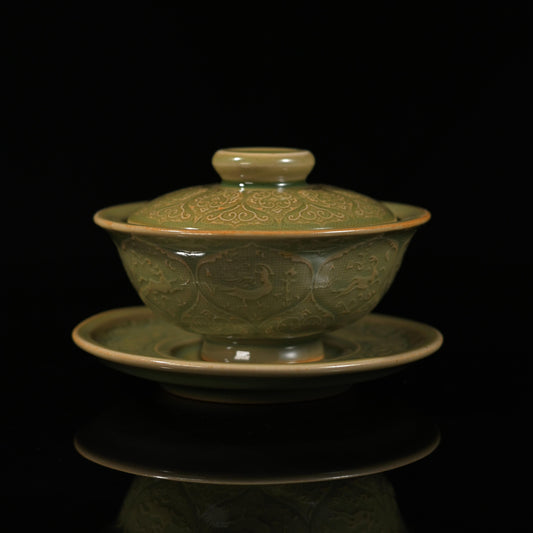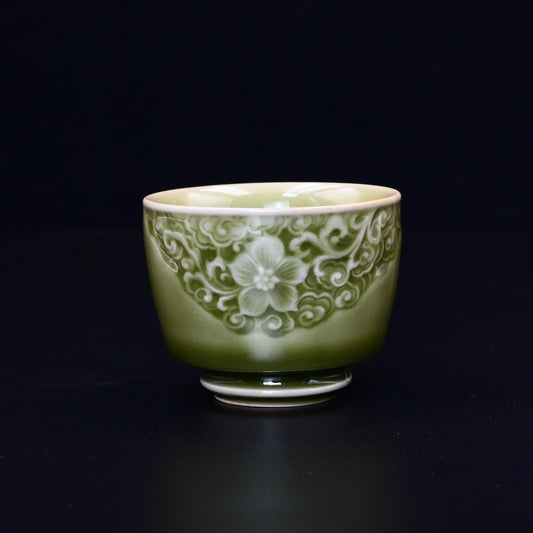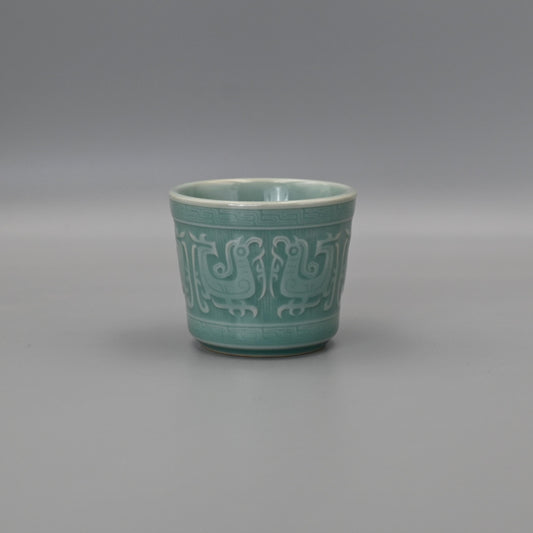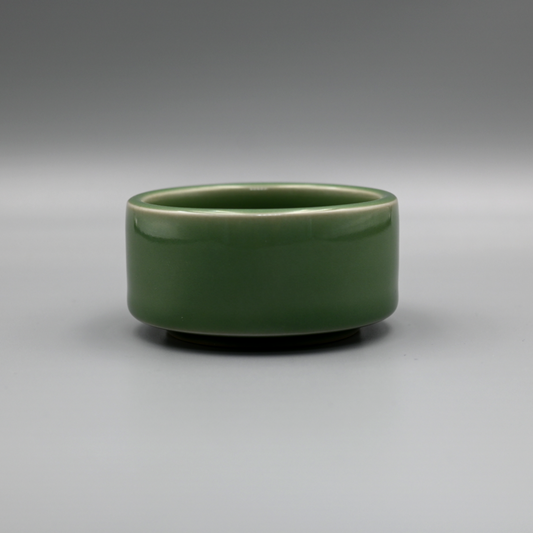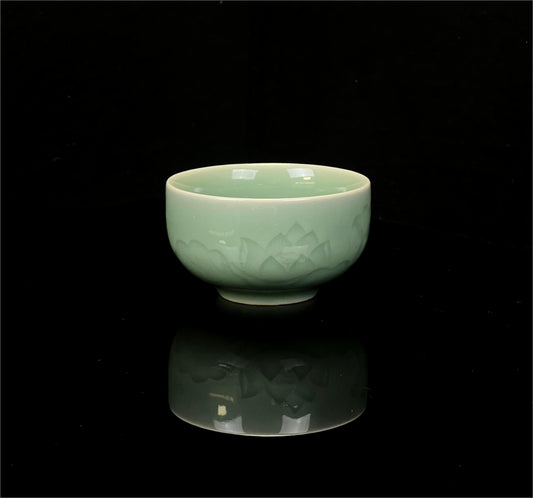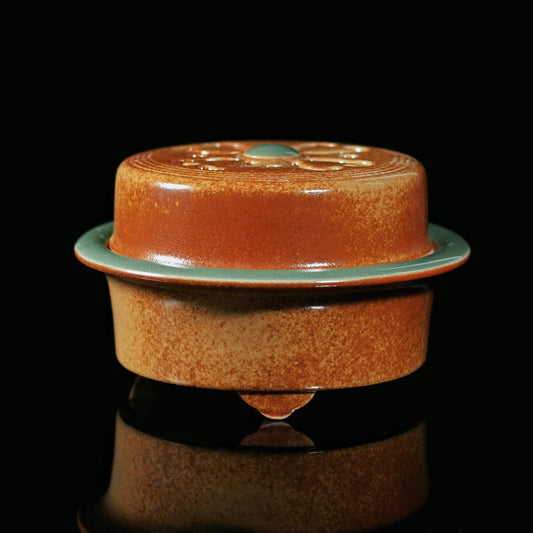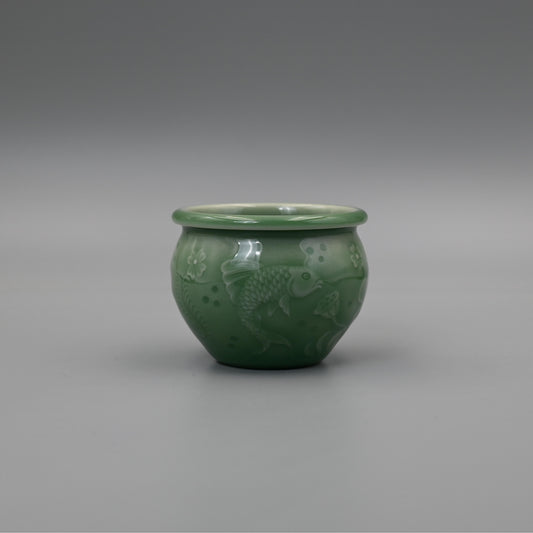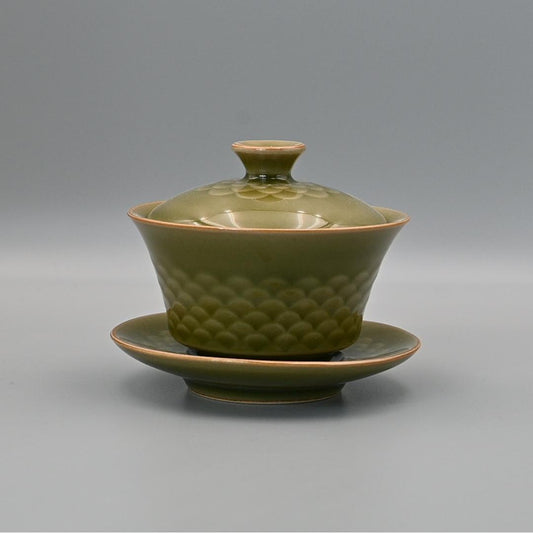
-
Longquan Celadon Vintage Glaze Relief-Carved Gaiwan Set
Regular price $79.00 USDRegular priceUnit price / per -
Longquan Celadon Hand-carved Flowers Underglaze Patterns Host Tea Cup
Regular price $29.90 USDRegular priceUnit price / per -
Longquan Celadon Celestial Blue Six-Phoenix Totem Master’s Cup
Regular price $29.90 USDRegular priceUnit price / per -
Longquan Celadon Waves Pattern Plum Green Host Tea cup
Regular price $54.90 USDRegular priceUnit price / per -
Longquan Celadon Lotus Pattern Plum-green Tea cup
Regular price $29.90 USDRegular priceUnit price / per -
Longyuan Celadon Linglong Teacup
Regular price $89.00 USDRegular priceUnit price / per -
Longquan Celadon Handmade "Hundred Flowers" Relief-Carving Teapot
Regular price $105.00 USDRegular priceUnit price / per -
Longquan Celadon Teacup with Embossed Koi Fish Design
Regular price $56.00 USDRegular priceUnit price / per -
Longquan Celadon Ice-Crackle Master Cup
Regular price $65.00 USDRegular priceUnit price / per -
Longquan Celadon Ge Kiln Octagonal Teapot
Regular price $125.00 USDRegular priceUnit price / per -
Longquan Celadon Ge Kiln Crackle Carved Hand Teacup
Regular price $68.00 USDRegular priceUnit price / per -
Longquan Celadon Jade-Like Glaze Incense Burner
Regular price $48.00 USDRegular priceUnit price / per -
Longquan Celadon Song Dynasty-Style Teacup with High-Footed Saucer
Regular price $54.90 USDRegular priceUnit price / per -
Longquan Celadon Plum Green Hand-Carved Fish and Algae Pattern Host Tea Cup
Regular price $54.90 USDRegular priceUnit price / per -
Longquan Celadon Fish Scale Pattern Vintage Glaze Gaiwan( Tea Bowl
Regular price $39.90 USDRegular priceUnit price / per

Collection: Celadon
Learn More About Celadon
What is Celadon?
Celadon is a high-fired ceramic with a jade-like glaze, ranging from pale green to deep emerald. It has been admired since ancient China for its elegance and smooth texture.Celadon is divided into Ge-kiln and Di-kiln.
Where is Celadon produce?
Celadon originated in China, with Longquan celadon being the most famous. Known for its jade-like glaze and elegant shapes, Longquan celadon is highly regarded for its exceptional quality and craftsmanship.
Differences of Ge Kiln vs. Di Kiln
- Ge Kiln – Crackled Beauty
Ge Kiln ceramics are famous for their fine crackle patterns, which naturally form on the glaze during cooling. The glaze is thick and glassy, with colors like grayish-blue or rice-yellow. A special feature is “Purple Rim and Iron Foot”— the rim has a purple tint, and the base appears dark due to unglazed clay.
- Di Kiln – Smooth Perfection
Di Kiln, also known as Longquan Celadon's younger branch, was historically associated with Longquan kilns in Zhejiang Province. Di Kiln ceramics have a thicker body and a smooth, flawless green glaze without crackles. They look glossy, bright, and jade-like, giving a fresh and pure aesthetic.
What makes Celadon special?
- Jade-like beauty – The glaze creates a soft, glossy finish.
- Crackle patterns – Unique, natural crackles form in the glaze.
- Durability – Fired at high temperatures, making it strong and long-lasting.
Why does Celadon have crackle patterns?
The crackles form naturally due to differences in glaze and clay contraction. Originally seen as a flaw, they are now valued as an artistic feature.
Does Celadon absorb tea like Yixing teapots?
No, Celadon is glazed, preventing it from absorbing flavors, making it suitable for different teas.
How should I care for Celadon?
Cleaning:
Rinse with warm water after use, no soap.
Use a soft brush or cloth for stains.
Storage:
Keep in a dry, cool place away from sunlight and chemicals.
Avoid Temperature Changes:
Don’t expose it to sudden temperature changes, like pouring boiling water into a cold teapot.
Handle Carefully:
Avoid dropping or bumping it, as celadon is fragile.
Regular Use:
Using it regularly can enhance its shine and flavor over time.

